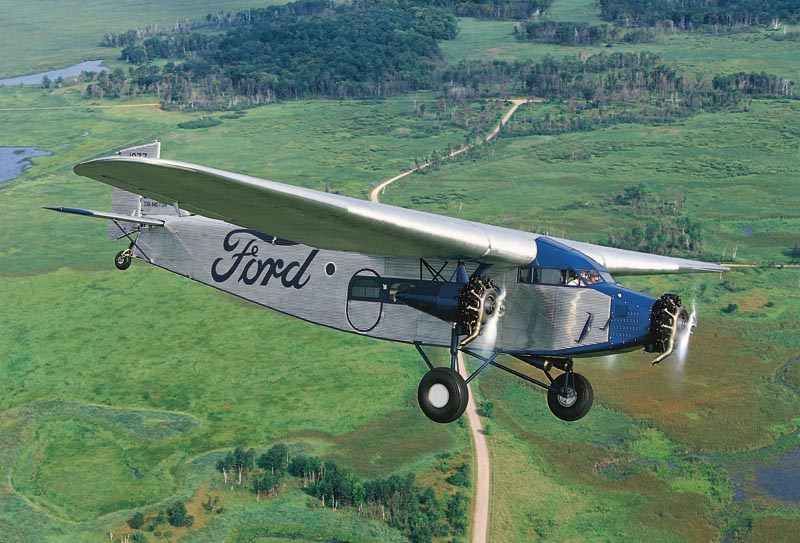Ford Flies Again

The announcement Wednesday that the South Florida Ford Dealers have signed on as a title sponsor for the Fort Lauderdale Air Show is great news for local business people who have worked to revive the show for several years. An auto company being associated with an air show may seem an odd coupling, but not to aviation historians.
The fact is the name Ford has been associated with airplanes from almost the birth of aviation. After succeeding in mass-producing his Model T Fords, Henry Ford became fascinated with vehicles that fly. Ford built the first successful commercial aircraft. The Ford Trimotor appeared in 1926, and was purchased by numerous pioneer airlines and 199 copies were produced before production ended in 1933. Among them was Ford’s own airline, Ford Aviation Transport, an airfreight outfit that was the first to fly air mail.
The Trimotor wasn’t pretty. The third engine in the nose was ungainly, and its air-cooled radial engines had no cowlings. Later designs in the early 1930s, such as the Boeing 247 and the Douglas DC-2, made it look archaic. But it was a sturdy and reliable machine, which achieved many firsts, including Richard Byrd’s flight over the South Pole, and many of Pan American’s flights from Miami to South America. It managed to keep flying for commercial purposes into the 1960s. A handful survive today, used mostly on tourist operations—in which the airplane itself is the star of the tour.
By World War II Ford had stopped building its own planes, but it became a major manufacturer of engines and aircraft designed by other companies. Its Willow Run plant, outside Dearborn, Michigan, had a production line a mile long. It built thousands of the Consolidated B-24 bombers, which along with the Boeing B-17 became the primary weapons in the campaign to destroy Nazi Germany’s industry. Ford built other airplane parts as well, and by the war's end it had built thousands of complete aircraft, plus 57,851 airplane engines and more than 4,000 military gliders.
This was in addition to building tanks, trucks and smaller vehicles, including 278,000 of the famous Willys jeeps. Ford even had a plant in Germany, which the Germans commandeered to produce its own weapons. As the Allies swept across Western Europe, German employees ignored orders to destroy the plan in Cologne and it actually produced its first post-war truck on May 8, 1945—the date the war in Europe ended.
It is probably too late for next week's show, but don't be surprised if Ford brings back its relic as a supporting actor in future airshows.
Image via
